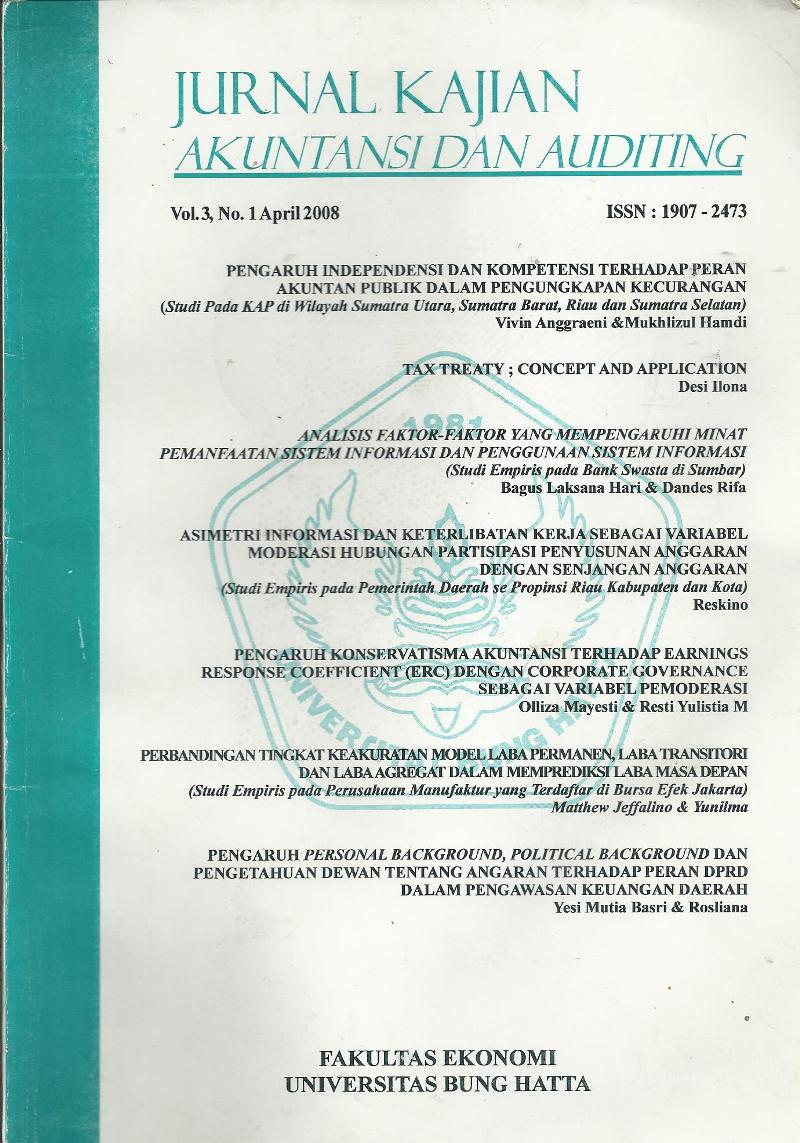PERBANDINGAN TINGKAT KEAKURATAN MODEL LABA PERMANEN, LABA TRANSITORI DAN LABA AGREGAT DALAM MEMPREDIKSI LABA MASA DEPAN (Studi Empiris pada Perusahaan Manufaktur yang Terdaftar di Bursa Efek Jakarta)
DOI:
https://doi.org/10.37301/jkaa.v0i0.6486Abstract
Earnings represent information which very paid attention by users of financial statements. Some research was examined the ability of earnings to forecast future earnings which only focused to aggregate earnings. Some literature mention that reported earnings number contain permanent and transitory earnings component which can be used to forecast future earnings and future cash flow. Permanent earnings is earnings related to core activity of the firms which always happened each every period. while transitory earnings are earnings do not relate with core activity of the firms and is not expected to happened in next period. This research empirically examines the level of accuracy model with permanent, transitory, and aggregate earnings component to forecast future earnings of the firms. This research also use naive model as benchmark compared with permanent, transitory, and aggregate earnings to forecast future earnings. By using 60 observations by time-series from 2000-2006. the result of research indicate that model with permanent earnings component more accurate compared model with transitory, aggregate earnings component, and naive model to forecast future earnings. This research also use exponential smoothing model as benchmark in sensitivity analysis. The result demonstrate that model with permanent earnings component more accurate compared model with transitory, aggregate earnings component, naive model, and exponential smoothing model to forecast future earnings.
Downloads
Published
Issue
Section
License
With the receipt of the article by editor of Jurnal Kajian Akuntansi dan Auditing and decided to publish, then the article copyright regarding to Jurnal Kajian Akuntansi dan Auditing
Jurusan Akuntansi Fakultas Ekonomi Universitas Bung Hatta as the publisher of Jurnal Kajian Akuntansi dan Auditing hold the copyright regarding all the published articles in this journal. Jurusan Akuntansi Fakultas Ekonomi Universitas Bung Hatta has the right to multiply and distribute the article and every author is not allowed to publish the same article that was published in this journal.



